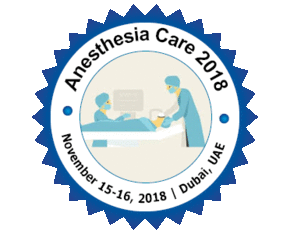
Veena Asthana
Swami Rama Himalayan University, India
Title: Premedication in pediatric patients: How far have we reached?
Biography
Biography: Veena Asthana
Abstract
Anxieties, fear of unknown and new environment are signifi cant determinants of pre-operative agitation in children
undergoing surgery and manifesting as tearfulness, screaming, clinging to parents, apathy, and withdrawal. If not properly
handled, its presence is associated with future maladaptive behavior. The incidence of preoperative distress maybe as high as
60% leading to resisting the anesthesiologist at induction or violent behavior at the time of shift ing and induction of anesthesia.
60% of children who underwent anesthesia manifests negative behavioral changes up-to two weeks postoperatively while
in 20% of cases these may continue for six months. Apart from undesirable eff ects of sympathetic tone and increased level
of catecholamine secondary to stress response, immunological, metabolic and hormonal changes also occur. Studies have
demonstrated the relationship between preoperative anxiety and emergence delirium, increased analgesic requirements, negative
behavioral changes, sleep disturbances and separation anxiety in the post-operative period. Uses of pharmacological or nonpharmacological
modalities are commonly utilized to decrease preoperative anxiety. Nonpharmacological therapies though
effective, have variable results. Sedative premedicants are the mainstay of pharmacological therapy though different agents and
routes of administration have been tried. Nonparental routes like oral/trans mucosal are preferred in children to alleviate the
needle fear and pain. Midazolam has attained a widespread acceptance as preoperative sedative and anxiolytic. Use of drugs
with pharmacological effects other than benzodiazepines have been tried and found to Have favorable kinetics. Use of α 2
agonist clonidine and Dexmedetomidine have been tried and found to have comparable results. Melatonin a natural hormone
produced in the brain has the properties of producing natural sleep and has been used as sedatives in elderly and children Newer
sedative premedicants like melatonin, clonidine, and Dexmedetomidine are efficacious in producing preoperative sedation,
reducing preoperative distressing anxiety, relieving postoperative pain and decreasing the occurrence of emergence delirium in
pediatric patients undergoing surgery. These agents can be used safely as an alternative to midazolam for premedication in children.

